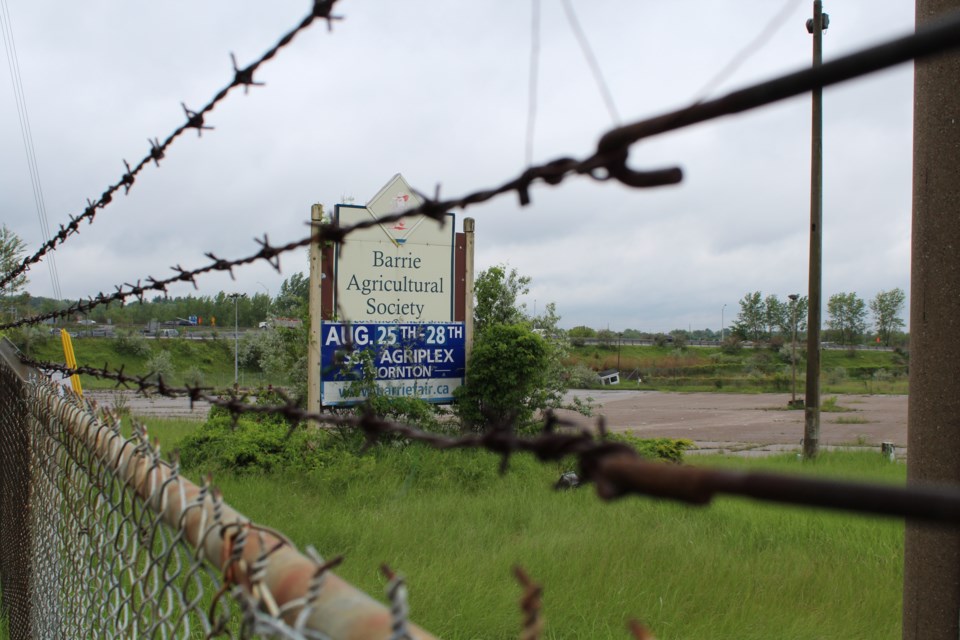Scientists don’t just think about physics, chemistry, math, biology, engineering, etc. We are also fascinated by “unscientific” topics such as politics, religion and history. However, most of us cannot abandon “scientific thinking."
I may style myself a “recovering scientist,” but I will never really “recover.” When I see sunlight glinting through a beautiful icicle, I also think about the heat source which created it by melting snow. Was a faded European tapestry bleached by ultraviolet (sunlight)?
The recently enacted More Homes, Built Faster legislation also has me wondering. Ontario's Conservatives claim they need space for the housing they promise to build.
During my 34 years in Barrie, I have been staring disapprovingly at the “urban wasteland” on Anne Street between Dunlop and Tiffin. Thinly occupied by scattered single-storey commercial establishments, this street is ripe for redevelopment with low-rise buildings with ground-floor commercial use and residential on upper floors.
Anne Street isn’t the only street crying out for infill development. Parts of Bradford Street have used car lots, some abandoned for years. Moreover, this street is a short walk from Barrie’s lovely waterfront park — an added reason for redevelopment.
Finally, nearly two decades ago, Barrie’s horse track — off Essa Road, overlooking Highway 400 — was abandoned. Access to the highway and proximity to the GO station makes this site ideal for residential highrise development.
I'm confident Barrie residents can identify other underused sites where infill development should occur long before we bulldoze productive farms and wetlands.
The other issue Conservatives claim slows housing construction is “red tape.” Red tape turns out to be a smorgasbord of regulations associated with construction.
Examples include the quality of copper pipe for plumbing. Poor-quality copper pipe can be prone to pinhole leaks, while high-quality plumbing lasts as long as the house in which it was installed. I know which I want in my house. Building standards include specifications for roof trusses and the sheets of strand board covering them, which must be strong enough to survive the weight of snow expected in our area.
There are standards for all manner of things such as foundations, insulation, water drainage around the foundation, the electrical system, and others.
Finally, local government must: A) sign off on the specifications of the proposed housing, and B) send inspectors to the building site during construction to ensure standards are actually being met. I am happy standards exist and that they are policed.
We only need to hear about disasters in countries like Egypt and Bangladesh with poorly enforced building standards to appreciate this.
Red tape also covers the training of tradespeople who work in the construction industry: bricklayers, framers, plumbers, electricians, roofers, gas fitters, etc. Not only do these well-trained professionals ensure that our buildings are safe, but they also save lives on the work site. Watching the speed at these people work, I am sure they save us money, too.
The shortage of these tradespeople slows construction these days. You may want your house built faster, but if skilled workers are not available, that cannot happen.
My daughter in London had a house fire 11 months ago. Her house needs a complete interior rebuild — wiring, plumbing, drywall, etc. The fire-damaged material was removed, but construction hasn’t begun, due to the shortage of skilled workers. Bulldozing hectares of Greenbelt cannot change this.
This brings up a final point. Carving subdivisions out of green fields and forests requires more work than construction within an urban boundary. In addition to land preparation, access roads, sewers and water mains must be built and electricity supplied. Within an urban area, much of this infrastructure already exists, as do schools, and public transit, reducing costs substantially.
Who will buy and live in the new housing proposed for the greenbelt? These are likely to be detached houses. They will not be starter homes, or rental accommodation for people who cannot afford a down payment.
Building a new subdivision pretty well guarantees that people who live there must own at least one vehicle to access work, schools and shopping. These new dwellings are guaranteed to raise carbon emissions by more than would housing built within existing urban areas.
Although the Ford administration has paid less attention to climate change than its predecessors, they did promise to lower greenhouse gas emissions, but offered no plan to actually achieve this.
In summary, there's no evidence that grabbing chunks of the greenbelt is actually needed to construct more homes. There is no likelihood that housing construction can be accelerated without persuading far more young people to join the ranks of the skilled trades and then training them.
Barrie resident Peter Bursztyn is a self-proclaimed “recovering scientist” who has a passion for all things based in science and the environment. The now-retired former university academic has taught and carried out research at universities in Africa, Britain and Canada. As a member of BarrieToday’s community advisory board, he also writes a semi-regular column. If you have a question Peter might be able to answer or something you’re curious about, email us at [email protected].



